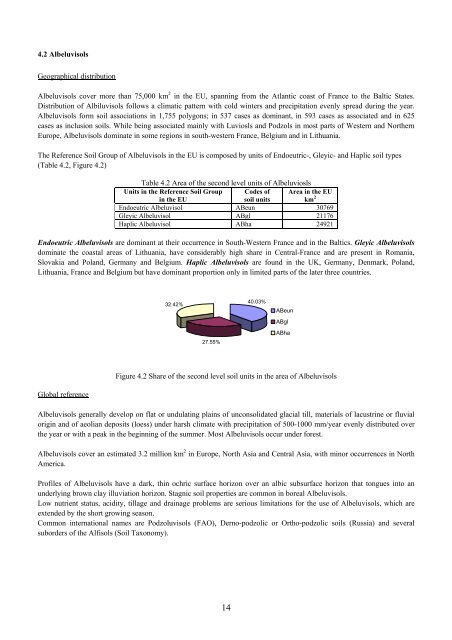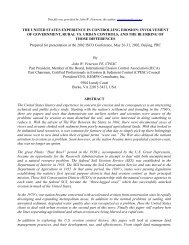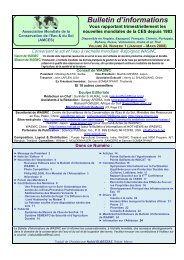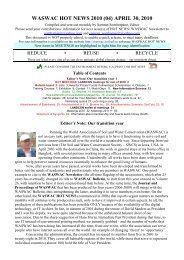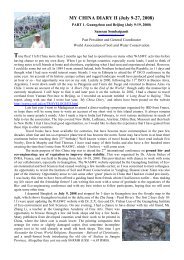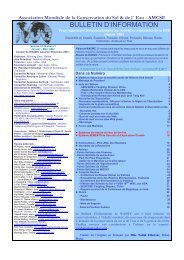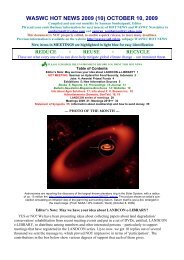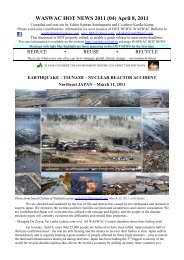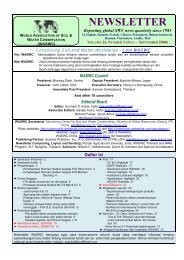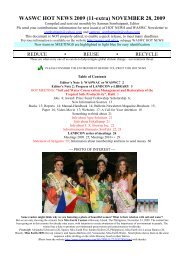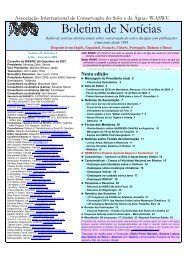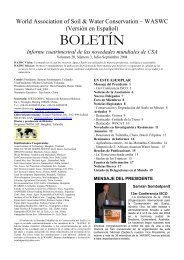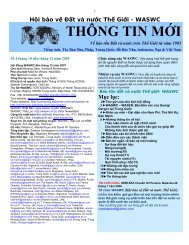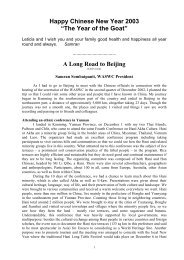Soils of the European Union - European Soil Portal - Europa
Soils of the European Union - European Soil Portal - Europa
Soils of the European Union - European Soil Portal - Europa
Create successful ePaper yourself
Turn your PDF publications into a flip-book with our unique Google optimized e-Paper software.
4.2 AlbeluvisolsGeographical distributionAlbeluvisols cover more than 75,000 km 2 in <strong>the</strong> EU, spanning from <strong>the</strong> Atlantic coast <strong>of</strong> France to <strong>the</strong> Baltic States.Distribution <strong>of</strong> Albiluvisols follows a climatic pattern with cold winters and precipitation evenly spread during <strong>the</strong> year.Albeluvisols form soil associations in 1,755 polygons; in 537 cases as dominant, in 593 cases as associated and in 625cases as inclusion soils. While being associated mainly with Luviosls and Podzols in most parts <strong>of</strong> Western and Nor<strong>the</strong>rnEurope, Albeluvisols dominate in some regions in south-western France, Belgium and in Lithuania.The Reference <strong>Soil</strong> Group <strong>of</strong> Albeluvisols in <strong>the</strong> EU is composed by units <strong>of</strong> Endoeutric-, Gleyic- and Haplic soil types(Table 4.2, Figure 4.2)Table 4.2 Area <strong>of</strong> <strong>the</strong> second level units <strong>of</strong> AlbeluvioslsUnits in <strong>the</strong> Reference <strong>Soil</strong> Groupin <strong>the</strong> EUCodes <strong>of</strong>soil unitsArea in <strong>the</strong> EUkm 2Endoeutric Albeluvisol ABeun 30769Gleyic Albeluvisol ABgl 21176Haplic Albeluvisol ABha 24921Endoeutric Albeluvisols are dominant at <strong>the</strong>ir occurrence in South-Western France and in <strong>the</strong> Baltics. Gleyic Albeluvisolsdominate <strong>the</strong> coastal areas <strong>of</strong> Lithuania, have considerably high share in Central-France and are present in Romania,Slovakia and Poland, Germany and Belgium. Haplic Albeluvisols are found in <strong>the</strong> UK, Germany, Denmark, Poland,Lithuania, France and Belgium but have dominant proportion only in limited parts <strong>of</strong> <strong>the</strong> later three countries.32.42%27.55%40.03%ABeunABglABhaFigure 4.2 Share <strong>of</strong> <strong>the</strong> second level soil units in <strong>the</strong> area <strong>of</strong> AlbeluvisolsGlobal referenceAlbeluvisols generally develop on flat or undulating plains <strong>of</strong> unconsolidated glacial till, materials <strong>of</strong> lacustrine or fluvialorigin and <strong>of</strong> aeolian deposits (loess) under harsh climate with precipitation <strong>of</strong> 500-1000 mm/year evenly distributed over<strong>the</strong> year or with a peak in <strong>the</strong> beginning <strong>of</strong> <strong>the</strong> summer. Most Albeluvisols occur under forest.Albeluvisols cover an estimated 3.2 million km 2 in Europe, North Asia and Central Asia, with minor occurrences in NorthAmerica.Pr<strong>of</strong>iles <strong>of</strong> Albeluvisols have a dark, thin ochric surface horizon over an albic subsurface horizon that tongues into anunderlying brown clay illuviation horizon. Stagnic soil properties are common in boreal Albeluvisols.Low nutrient status, acidity, tillage and drainage problems are serious limitations for <strong>the</strong> use <strong>of</strong> Albeluvisols, which areextended by <strong>the</strong> short growing season.Common international names are Podzoluvisols (FAO), Derno-podzolic or Ortho-podzolic soils (Russia) and severalsuborders <strong>of</strong> <strong>the</strong> Alfisols (<strong>Soil</strong> Taxonomy).14


